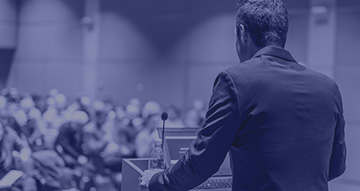Reimagining the Learning Canvas for Leaders of Tomorrow
By Sunil Puri, Senior Director and Head of Asia Research, Center for Creative Leadership (CCL) |Jan 06, 2022
Whether you are navigating stormy waters or leading your teams towards exemplary performance, the quest for creating forward-thinking and future-ready leaders does not stop. Read what Sunil Puri, Senior Director and Head of Asia Research at CCL, says about the amplified need to prepare next-normal-ready leaders in the shortest span of time, and what role cultural alignment can play in reframing L&D initiatives at a firm in times like these.
Firms are pivoting and redefining almost every aspect of how they operate and foresee their future success while grappling with ongoing challenges. As HR teams toil to align business goals with dynamic leader capabilities, it is perhaps being universally accepted that existent policies need to be revisited and leadership development initiatives be realigned to the altered reality we are inhabiting. With the onset of work-from-home and hybrid models of work, firms have had to undergo massive ‘mindset’ shifts, giving up on in-person leadership training programmes, and adapting to online models.
Emergent Trends in L&D Practices
Given the changes affecting business models and consumer behaviours, numerous trends emerged with respect to leadership development and practices. The shift from physical to virtual was finally met with more acceptance as opposed to pre-pandemic times when leaders felt cheated if nominated for an online training session and not a face-to-face event. More people, therefore, embraced digital learning, albeit with reluctance. One of the biggest pros, perhaps, is that companies witnessed a surge in leadership development activities, with more firms investing in upskilling and reskilling their employees to gain a competitive advantage and keep them gainfully employed via learning initiatives. The emphasis was also laid on executive coaching to build newer capabilities around emerging themes of wellness, empathy, and diversity. Firms actively reallocated budgets owing to non-existent training logistics costs; diverting dollars towards better collaboration, learning technology, and content for leadership development.
However, despite the intent to invest, achieve more, and scale up leadership development, the impact of all this activity remained somewhat compromised. Higher attendance did not automatically translate into an increased level of engagement, and interpersonal relationships built over trust, and experiential learning through rotations and market study for senior leaders, took a back seat.
Leadership Development Strategy for the New Context
As they navigate the volatile scenario of today, businesses are looking for more dynamic leadership development, translating into leaders equipped with the right kind of skills, in the right numbers, and most importantly, developed in the shortest span of time. Such a leadership development strategy helps clearly define and tackle the outcomes expected of HR. This third vector of speed is driven by firms on a steep growth curve or those undergoing disruptive changes at a swift pace, needing leaders who could hit the ground running from day zero.
In order to attain a balance within these key elements, leadership development, as I see it, ought to be aligned along four planes—culture, business, technology, and process. From here on, I would like to focus on alignment between leadership development and culture, since it is one of the core planes that impacts quality and quantity of leaders, and speed of development.
The general skepticism surrounding budget allocations for L&D initiatives, especially in times of crisis, has not made it an entirely smooth journey for HR teams as they strive to create resilient leaders imbued with newer skills of agility, empathy, and digital dexterity who can leverage the opportunities presented by the crisis. It is true that the onus to create development opportunities lies on HR, but it is the workforce that needs to embrace it as a measure towards their incremental growth, and not merely look at it with a sense of entitlement.
In my opinion, firms with learning culture at their heart, where leaders ‘want’ to learn, and view it as an investment that ultimately impacts business, and not a privilege or time off from work, have a better and lasting rate of success.
While building a continuous learning culture may be time-taking, asking a few key questions around a company’s values, infrastructure, hiring intent, and openness may be a good start. For instance—Does the organisation view learning as a core value and aims to impart user-centric knowledge? Do employees have a psychologically-safe environment where they can make mistakes and learn from them? Does the organisation hire and reward learning agility? Does it have adequate and user-friendly L&D infrastructure? Introspecting along these levels, in my view, is bound to get firms closer to curating and nurturing the desired level of learning culture in their teams.
A learning culture is thus fostered by certain key pillars and shaped by a growth mindset, forming a cohesive whole. The curiosity to know more and understand the ‘why’ of things, the flexibility to learn and unlearn, the drive to apply new learnings on the job, the preference to collaborate as opposed to working in silos, the psychological safety and willingness to share and receive feedback, and the mindset to embrace failure, are some of the elements which further cement a strong learning culture.
Curating a Learning Culture
In times of crisis and uncertainty, managers ought to go one step further by contextualising the ‘why’ of learning to their teams. A personalised and learner-centric approach goes a long way in getting people to sign up for L&D initiatives, which may have hitherto seemed irrelevant or unidirectional. Sharing the big picture, coupled with incentivised learning, may also hasten the employee engagement process. I have noticed that organisations have, in fact, devised inventive ways to drive L&D culture, ranging from raffles, competitions, and gift vouchers etc. to employees who embrace learning. A few quick tips to bolster the learning culture may be:
- Identifying learning as a core value with a focus on individual and team development, facilitating technical and non-technical learning, thereby preparing one for any curveballs thrown along the way.
- Keeping up with the moving goals by introducing well-informed learning initiatives in line with changing business objectives and budgets will remain key in the dynamic work scenario.
- Setting and communicating L&D goals basis identification of skill gaps, and a clear understanding of specific roles and competencies that are constantly evolving.
- Designing compelling programmes with a clear focus on duration, interactivity, collaboration, media diversity, compressed and tailor-made content, along with the requisite technological support.
- Investing in learning infrastructure to make it a user-friendly experience, giving teams the right tools, coaching programmes, and learning technologies.
- Making it a collaborative effort by encouraging inter-departmental communication on new learnings and knowledge-sharing in more systematic events.
- Partnering with business leaders to define, prioritise, curate, and fund L&D programmes.
Measuring Impact Creatively
While businesses tighten purse strings on development budgets, they expect tangible and substantial ROI. Nevertheless, how does one really define the success of L&D initiatives that are rolled out? Firms across the globe are tweaking traditional metrics of satisfaction surveys and completion scores, creatively. Obsolete trends are making way for newer evaluation approaches in terms of:
Outcome-based competencies: In the last couple of years, there has been a shift in focus here too. Traditionally, the emphasis was on developing competencies, but now the lens is on outcome-based frameworks. It is about understanding the efficacy of an initiative through the extent to which the initial problem has been addressed. The key ingredient to curating a programme which is already future-oriented would mean having conversations with business leaders to identify the real gap, and the skillsets they would like to see in their team members, say, two years from now. Working on cultivating these aspirational skills may just be the answer to prevent the skill gap from widening.
Reemphasising the power of the collective: Team development coordinated with individual development is being lauded in the new work culture. Curating a team journey that aligns with the leader journey via workshops, mentoring circles, and learning projects will have an enduring impact on the overall workforce.
Bucketing priorities: Forward-thinking firms are reassessing ROI basis the impact on corporate culture, team engagement scores, and even innovation, highlighting new incubation activity. Those adopting technological advances at a high pace are evaluating the efficacy of the online delivery formats and the level of digital activity.
The Future of Leadership Development
The mammoth task of fulfilling L&D objectives will always have people and culture at the centre. The learning models may evolve, tools may differ, there may be a shift in the percentage of blended learning formats, and newer skills may come to the fore, yet this investment in people shall stay constant. Unwavering attention to development initiatives that ensure horizontal and vertical growth of a person in a fast-paced manner, and continual investment in these areas will ensure the future-readiness of a company. Thus, a sharp focus on developing a sophisticated mindset is critical, instead of signing up for programmes that may or may not add to the desired skillset.
CCL research[1] reveals that progressive organisations have catapulted themselves forward by identifying internal and external partners in terms of coaches and trainers to help them reset their L&D to align with the future agenda. This, in my view, is the perfect example of progressive leaders who do not lose sight of the end-goal and navigate turbulent times by devising newer ways—in this case, blended learning complemented by virtual formats and usage of superior tech—to develop leaders.
At the end of the day, HR teams may mandate the development initiatives, but any real-time impact will only be felt if those efforts have garnered employee engagement and application, and if they stay closely aligned with the business strategy.
[1] Center for Creative Leadership. (2021). Navigating the New Normal: Accelerating Leadership Success in Asia https://www.ccl.org/articles/research-reports/navigating-the-new-normal-accelerating-leadership-success-in-asia/

Sunil Puri, Senior Director and Head of Asia Research, Center for Creative Leadership (CCL)
Sunil Puri is a human capital researcher, data scientist, and thought leader with over 23 years of experience across large global organisations. In his current role at the Center for Creative Leadership, he leads thought leadership and new product development in Asia. He has authored several pan-Asia research studies and is a frequent speaker at regional and global conferences. Sunil is an alumnus of Indian Institute of Technology (IIT), Delhi, and Indian Institute of Management (IIM), Ahmedabad.






